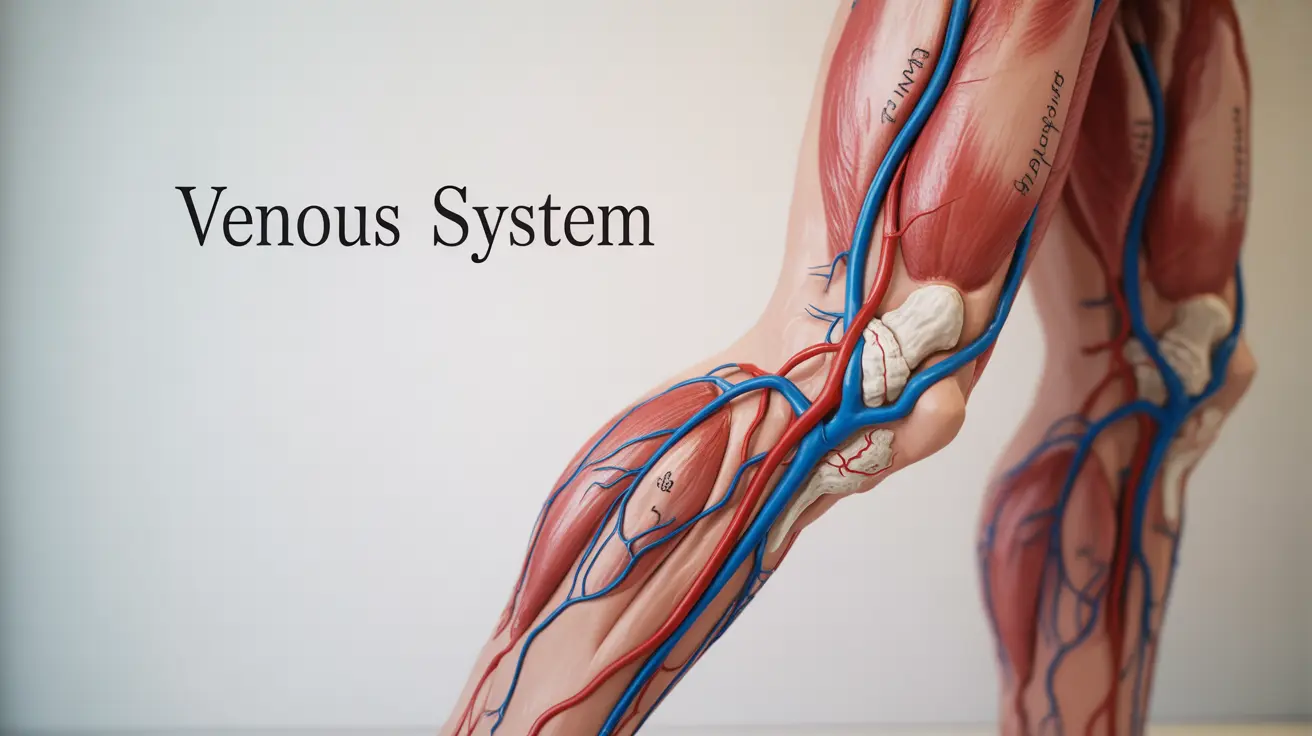The venous system plays a crucial role in your body's circulation, working tirelessly to return blood from your tissues back to your heart. This complex network of vessels, valves, and pumps ensures proper blood flow and maintains overall health. Understanding how your venous system works and recognizing potential problems can help you maintain better circulatory health and seek treatment when needed.
How the Venous System Works
Unlike arteries that rely on heart pressure to move blood, your venous system uses a combination of muscle contractions, one-way valves, and gravity to transport blood back to your heart. This unique mechanism helps maintain proper circulation even when you're standing or sitting for long periods.
Key Components and Functions
- Superficial veins near the skin's surface
- Deep veins within muscle tissue
- One-way valves that prevent backward blood flow
- Muscle pumps that help push blood upward
Common Venous System Problems
Various conditions can affect your venous system's function and health. Understanding these issues can help you identify potential problems early:
Varicose Veins
These enlarged, twisted veins typically appear in the legs and can cause discomfort, swelling, and cosmetic concerns. They occur when vein valves become weak or damaged, allowing blood to pool in the vessels.
Chronic Venous Insufficiency
This condition develops when veins have trouble sending blood from the legs back to the heart, often resulting in leg swelling, skin changes, and persistent discomfort.
Deep Vein Thrombosis (DVT)
A serious condition where blood clots form in deep veins, usually in the legs. DVT requires immediate medical attention as clots can break loose and travel to the lungs, causing a potentially life-threatening pulmonary embolism.
Maintaining Venous Health
Several lifestyle modifications can help maintain and improve your venous system health:
- Regular exercise, especially walking
- Maintaining a healthy weight
- Avoiding prolonged sitting or standing
- Wearing compression stockings when recommended
- Elevating legs while resting
- Staying well-hydrated
Treatment Options
Modern medicine offers various treatment approaches for venous conditions:
- Conservative management with compression therapy
- Minimally invasive procedures like sclerotherapy
- Endovenous laser treatment
- Radiofrequency ablation
- Traditional surgical approaches when necessary
Frequently Asked Questions
What are the main symptoms of problems with the venous system, like varicose veins or vein disease?
Common symptoms include leg pain, swelling, heaviness, cramping, skin changes, and visible enlarged veins. Some people may also experience itching, burning, or restless legs.How does the venous system work differently from the arterial system, and why is that important?
The venous system works against gravity using one-way valves and muscle pumps to return blood to the heart, while the arterial system uses heart pressure to push blood outward. This difference makes the venous system more susceptible to circulation problems, especially in the legs.What are some lifestyle changes or daily habits that can improve vein health and prevent venous problems?
Regular exercise, maintaining a healthy weight, avoiding prolonged immobility, wearing compression stockings when needed, and staying hydrated are key lifestyle changes that can improve vein health.What are the treatment options for common venous conditions, and when should I see a doctor?
Treatment options range from conservative measures like compression therapy to minimally invasive procedures and surgery. See a doctor if you experience persistent leg pain, swelling, skin changes, or if varicose veins become painful or inflamed.Are there any warning signs of serious venous problems, like deep vein thrombosis (DVT), that I should watch for?
Warning signs of DVT include sudden leg pain or tenderness, swelling, warmth, redness, and skin that feels firm or hard to the touch. These symptoms require immediate medical attention, especially if accompanied by shortness of breath or chest pain.




